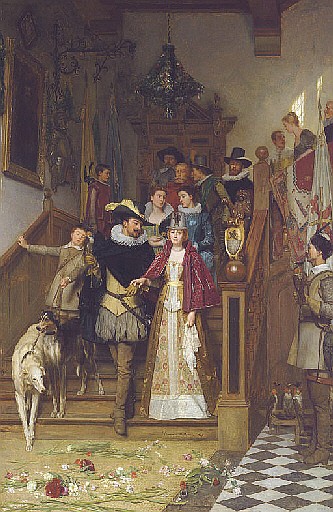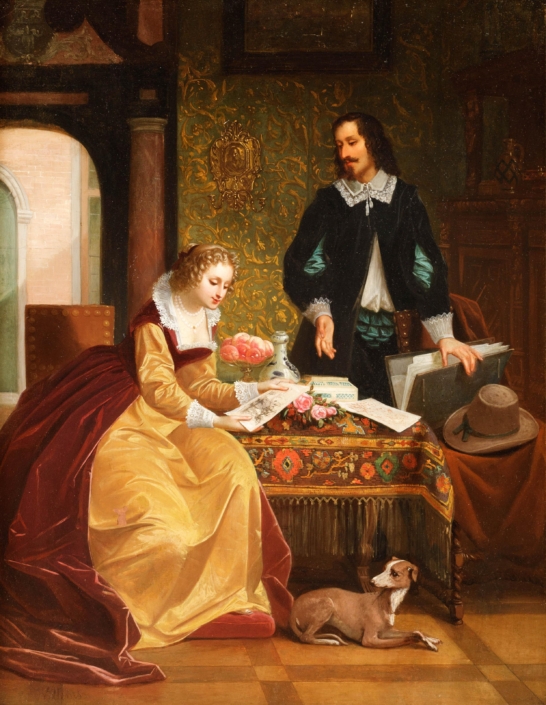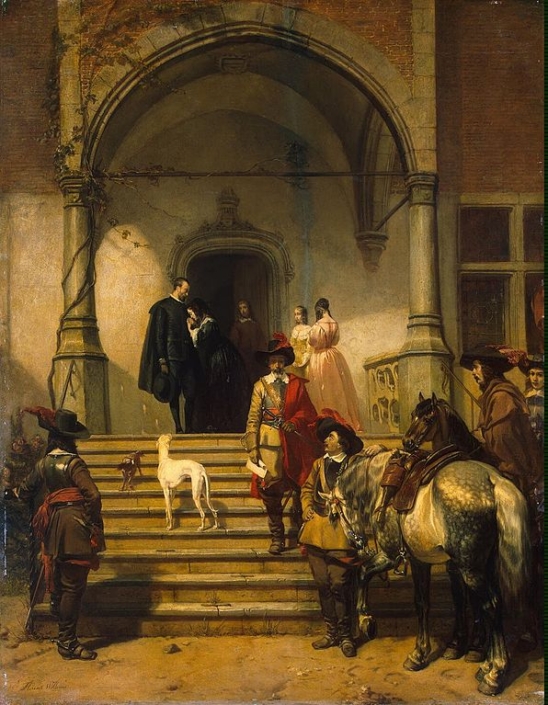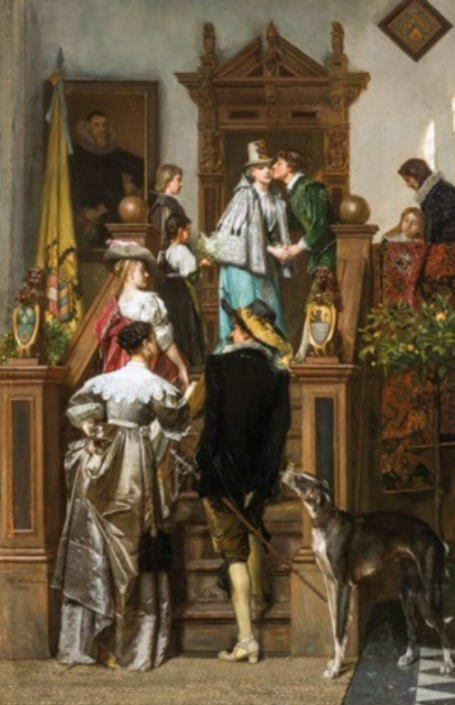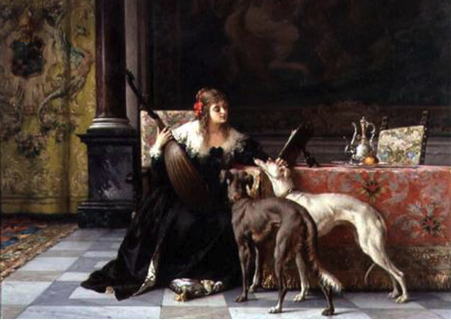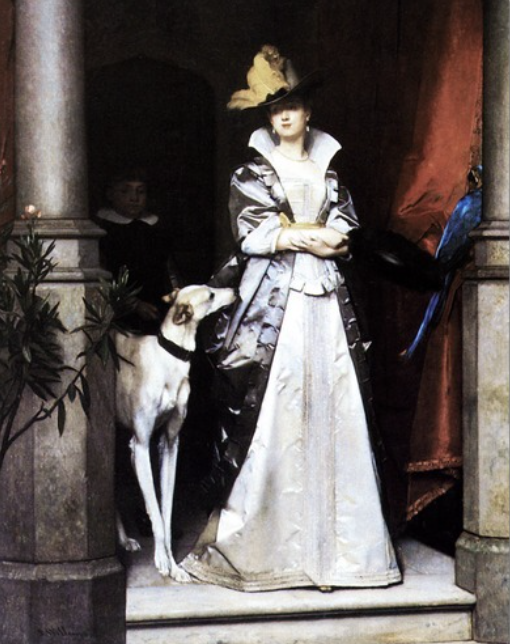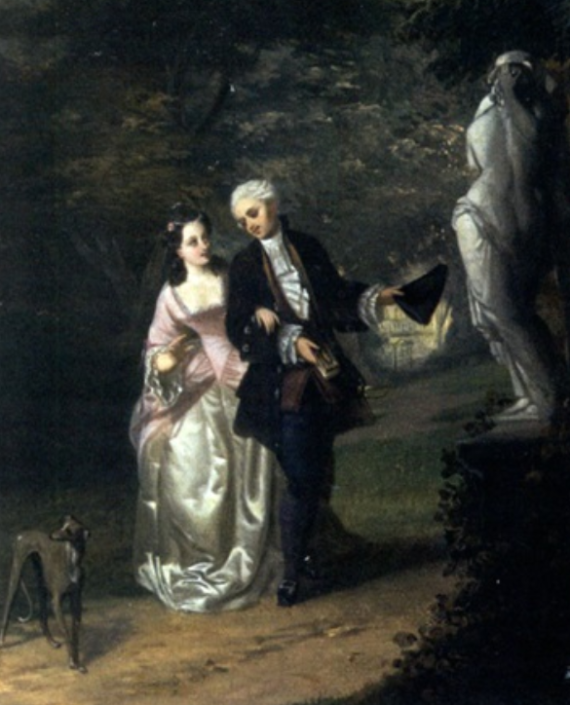8 January 1823 – 23 October 1905
Florent Willems or Florent Willems van Edeghem was a Belgian painter and art restorer. He was successful with his genre scenes depicting a few figures in an interior executed in the style of the 17th century Flemish and Dutch Baroque. He was particularly praised for his ability to render realistically the materials of the clothes of his figures which earned him the nickname of the ‘modern Ter Borch’.
Willems was born in Liège as the son of Martin Adrien Willems, a teacher at the Lycée Imperial in that city. He studied art at the Academy of Mechelen, a city to which his family had moved. He then moved to Brussels where financial circumstances compelled him to work for the art dealer Héris as an art restorer. He copied and restored old pictures for the art dealer. At barely 18 years old he came to the attention of Hamilton Seymour, the English embassador to the Belgian king. Mr. Seymour gave him a commission to paint a portrait of himself with his wife and children.
He made his debut at the Brussels Salon in 1842 with a Music Lesson and a Guard-room scene. The king of Belgium Leopold I acquired the first painting. He subsequently exhibited regularly at the salons of Paris and Brussels. His submissions to the Paris salon of 1844 won him golden medals third class. Around this time he settled in Paris, where his pictures enjoyed considerable popularity under the Second French Empire. Fellow Belgian artist Alfred Stevens joined him in 1849 in Paris and lived with him as well as worked for him in his studio. Willems’ interest in depicting women in interiors clearly had an influence on Stevens’ own choice of subject matter.
He died at Neuilly-sur-Seine.


